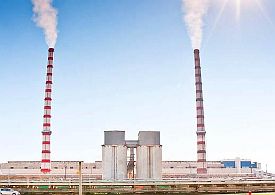Energy, Estonia, Good for Business
International Internet Magazine. Baltic States news & analytics
Wednesday, 31.12.2025, 21:26
Co-incineration of oil shale and coal being tested in the Baltic Power Plant in Narva
 Print version
Print version |
|---|
Coal with higher calorific value is added to oil shale that has previously been considered unfit for producing energy, thus creating fuel fit for incineration. The proportion of Siberian coal in the fuel mixture is 10-30%.
According to Tõnu Aas, CEO of Narva Power Plants, for years the best oil shale calorific value has been 8.4 MJ/kg, which leaves a significant amount of oil shale with low calorific value unused. “Until now, oil shale with low calorific value was considered unfit for producing electricity and heat and treated as mine waste,” Aas explained. “During the tests we mix oil shale with low calorific value with coal that has high calorific value, and the result should be a fuel mixture fit for incineration.”
So far, biofuel and peat have also been used in the fluidized-bed boilers of Narva Power Plants, in addition to oil shale. During the test-incineration of coal, it is discovered how the equipment reacts to this type of fuel and what effect it has on emission levels.
According to Aasa, coal, as well as oil shale, is available with different calorific values and prices.
“The optimal proportion of coal and oil shale shall be revealed during the co-incineration tests in the upcoming year,” he added. “In case of success, this means diversifying the electricity and heat production portfolio for Eesti Energia as well as greater flexibility in terms of regional electricity market competition.”
Besides the better usage of mined oil shale and decreasing the amounts of mine waste, the co-incineration of coal and oil shale also means that more oil shale with higher calorific value remains for the oil industry, thus giving the use of the natural resource more additional value.
Eesti Energia’s Narva Power Plants participate in the Nordic electricity market, and since the beginning of 2013 they have been selling all of their production to the Nordic power exchange Nord Pool Spot. In the first nine months of this year, Narva Power Plants produced about eight terawatt–hours of electricity for the market.








 «The Baltic Course» Is Sold and Stays in Business!
«The Baltic Course» Is Sold and Stays in Business!

